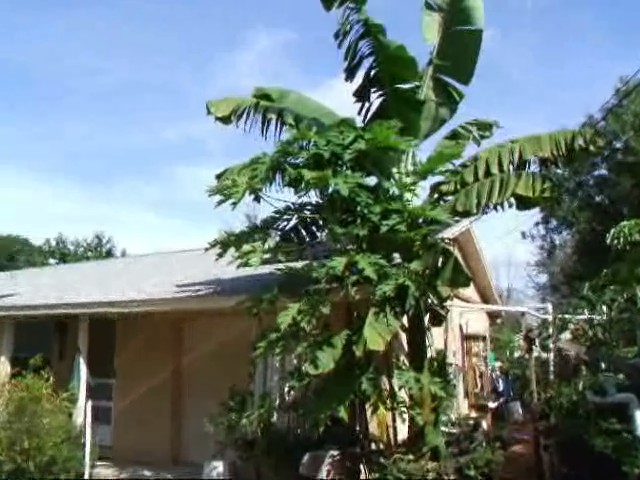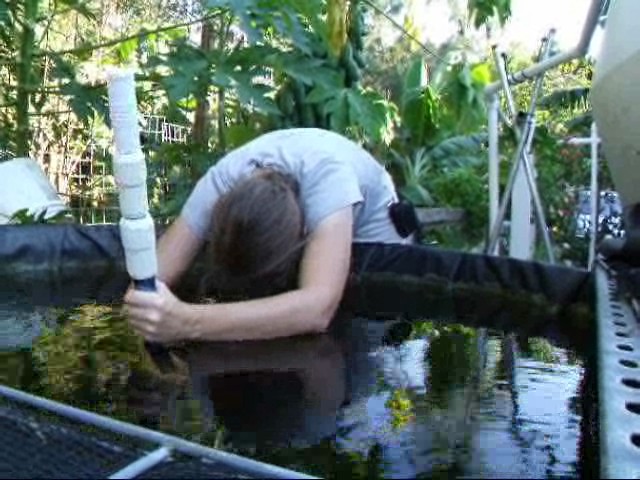It has come to my attention that I haven’t posted anything about worms or Vermicomposting to my blog. I originally set up worm bins for disposing of kitchen scraps and getting wonderful worm castings back in the summer of 2007. Worms are really easy to keep. There is a nice book out there Worms Eat My Garbage that covers all the basics for keeping worms. I’ve found that worms are easier to keep if you have a large breathable wood bin but they can be kept in a plastic storage bin if you can maintain the proper temperature and moisture level for them (plastic bins can tend to get too wet which can cause smell issues and if not kept in complete shade, they can really heat up to much for the worms.
Shredded cardboard makes great bedding for Vermicomposting as it doesn’t turn into paper mashae balls the way shredded news paper will. There are many other materials that can be used as worm bedding, like peat, leaves, coco coir, and most anything else that will provide moisture holding capacity as well as some air entrapment (fluffiness) to the materials added to a worm bin.
Worm bins should be kept moist like a wrung out sponge but not wet. A WET worm bin can quickly become anaerobic and a smelly nuisance from which the worms are likely to flea. By the way, there is no way to keep worms in a bin if they really wish to leave. Worms can easily squeeze through any screen you might put over the air holes. In fact window screens are regularly used as separation layers in a worm bin.
There are plenty of sites you can look up that could tell you how to build a worm bin, many sites will even charge you for plans. A worm bin is simply a box that you put some moist bedding into and some veggie scraps and worms, keep it moist but not too wet and the worms eat the garbage. It is that simple. Once the bin has a large amount of castings in it instead of just bedding and veggie scraps then there are many ways to separate out the worms so one can keep them going for a continuing bin. See if you simply leave the worms in nothing but their own castings, most the worms will vacate or not survive (who wants to live in an overfull outhouse.) I usually pull the mostly finished castings out of the bin and then I put new moist bedding/food in the bottom of the bin, then I put a screen over the new material and place the nearly finished vermicompost on top. I have found that letting the nearly finished stuff dry out a bit on top tends to get the worms to move down into the new material quicker. I tried it the other way around for a while but half the worms tended to stay down in the bottom of the bin where all the new juices would keep dripping down and providing food for them.
One of the biggest challenges we have had with our Vermicomposting here has been ants. Ants love all the stuff we might put into a worm bin and ants love worm castings too. Most of our ants here in Central Florida seem to bite too. Our solution is to put the feet of the worm bin (or table the worm bin is on) in containers. Originally we would put water in those containers since ants won’t cross a moat but the water would evaporate and mosquitoes would breed in it so we now use mineral oil in the containers as it doesn’t evaporate nearly so much and mosquitoes don’t seem to breed there. Just have to keep an eye on debris that could build up and provide a bridge for the ants across the moat. Also keep an eye out for plants that might provide a path into the bin as a blade of grass touching the bin above the moat containers will provide a path for ants. Most other bugs are not really a problem in an outdoor worm bin in my experience.
As this post has already gotten too long, in another post I’ll have to talk more about worms and Aquaponics but as a short note here, yes worms live very happily in gravel beds. Flood and drain provides plenty of aeration for them and if the water is well aerated they will even live underwater full time.





Hey TCLynx, I can’t find a more recent blog post about worms so I’m leaving my question here. What kind of worms do you use in your aquaponic beds?
The same type of worms I use for vermicomposting. I actually collected a hand full of worms from my worm bins to start up each of my grow beds when I first got started.